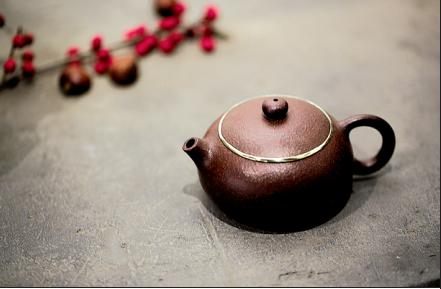 |
|
Some customers may also choose to use gold in the repairs. [Photo provided to China Daily] |
Indication of history
The technique of Ju Ci is more than 1,000 years old in China. Illustrations of craftsmen mending pots can be found in Chinese paintings dating back to as early as the 13th century. Gu estimates that there are only about 1,000 craftsmen in China who are skilled in Ju Ci. In some regions of China, the craft has been recognized as an intangible cultural heritage.
Expert craftsmen in the past who were dealing with porcelain wares would drill through the glazed surface using hand-operated drilling wheels equipped with a diamond tip. The process requires great precision and control given the fragility of the porcelain.
In this modern era, Gu uses a fine machinery drill that revolves up to 50,000 times every minute to accurately create fine holes at the required angles.
"Dentists use the same machine to work on people's teeth. You need to operate the drill in such a way that it pierces the porcelain or pottery surface without penetrating it," explained Gu.
Apart from using staples made from iron or gold, Ju Ci craftsmen also use metal to seal the cracks or patch chipped areas. Craftsmen may at times also carve patterns on the metal to make the patchwork more aesthetic.
The Japanese method of kintsugi is sometimes also used to seal cracks. This technique involves filling the gap with lacquer and finishing off with a lining of fine gold.
The technique of Ju Ci differs from typical repair methods in that it is not aimed at restoring the perfect look, and this is where its beauty lies, said Gu.
"Repair marks are an indication of the item's history," she said.
"People don't regard them as imperfections-they see them as meaningful statements."